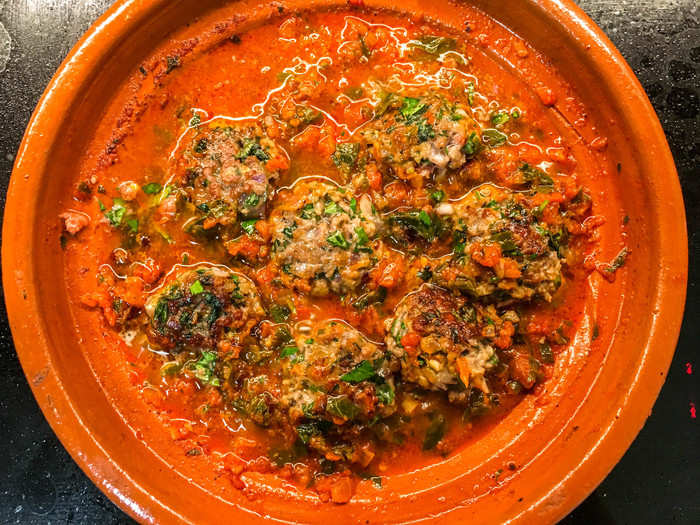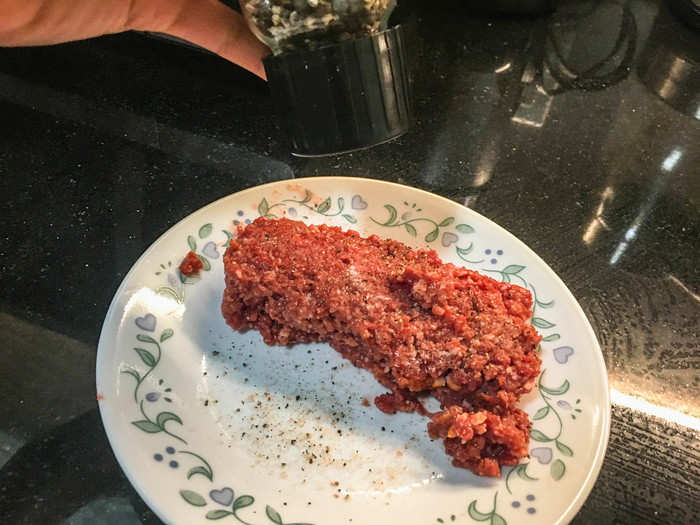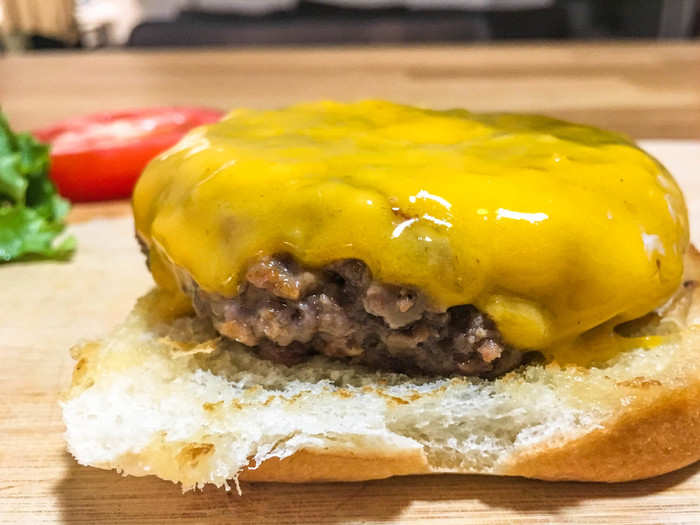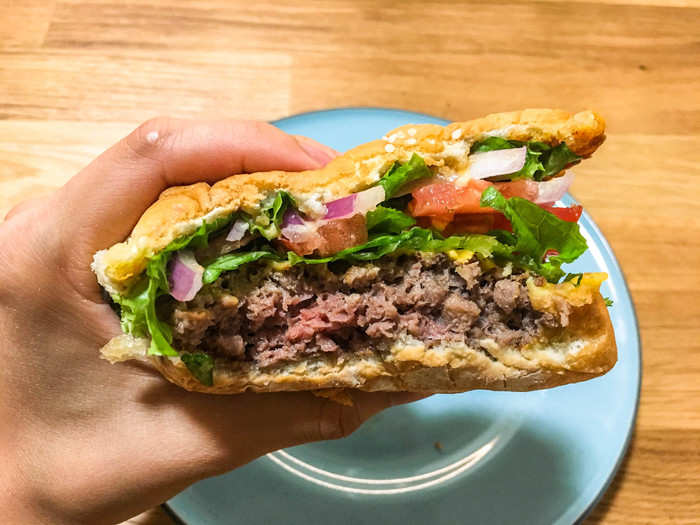- Home
- slideshows
- miscellaneous
- I'm a beef eater, but after cooking three beef recipes with Impossible 'meat' I'm a convert for life
I'm a beef eater, but after cooking three beef recipes with Impossible 'meat' I'm a convert for life
Impossible Burger grounds come in standard packaging for a 12-oz package of ground beef. It looked so much like the real stuff that it was hard to believe it wasn't.

The Impossible burger looked pretty much like ground beef. There were slight differences — the grain was finer and there wasn't the sheen of animal fat. But if I didn't already know that this wasn't beef, I wouldn't have guessed that it wasn't.

First, I wanted to test how the grounds cooked on their own. My recipe: simple meat sauce. I was so excited about how well the Impossible grounds were browning that I forgot to take pictures of the process. The "meat" browned on the bottom as soon as it hit the pan, and continued to brown at the rate that beef does. It shrank, stiffened, and rendered fat — again, just like ground beef does.

The smell, however, was noticeably different from the smell of beef cooking. It was slightly nutty, very sour, and missing an animal flavor. The Impossible grounds also absorbed more tomato sauce than the ground beef I've used in the past.

However, once everything was put together, the meat sauce looked remarkably real. Even though I was worried the Impossible grounds might absorb too much moisture, the consistency of the sauce ended up being perfect.

If I hadn't personally cooked this meal, I wouldn't have known just by looking that there wasn't beef in it.

It tasted, too, like normal meat sauce and pasta. Perhaps it was missing that extra dose of pungent flavor that comes only from animal fat, but I didn't really notice this unless I was looking for it. As I happily plowed through this meal, I found myself wondering if Impossible Foods hadn't actually just sent me a package of ground beef.

Next, I wanted to test how the Impossible grounds would fare in meatball form. The challenge: Moroccan kefta tagine.

Impossible CTO David Lee told me that you can use Impossible grounds just like you'd use ground beef. So I made my kefta meatballs the way I usually would.

In the meatballs: diced onion, chopped parsley, salt, black pepper, cayenne pepper, and a heaping dose of cumin.

The Impossible "meat" molded just like beef. It had the same bounce, softness, and texture, and I didn't have to change a thing about the way I usually make meatballs for this recipe.

The only minute difference was that the "meat" was slightly less sticky. When I washed my hands, the grease slid right off. When I wash my hands after touching ground beef, the grease takes multiple pumps of dish soap to get off — an aspect of handling beef I'm not sure I missed.

Again, the "meat" browned right as it hit the pan. And again, it cooked exactly at the speed at which ground beef cooks. It browned like beef browns. It stiffened as beef stiffens. It released fat like beef releases fat.

If it wasn't for that telltale sour, nutty smell, I wouldn't have known that the meatballs in the pan were not made from beef.

Once they were browned, I plopped them into the tagine, where the tomato sauce base had been simmering all along.

I learned this kefta tagine recipe when I was living in Morocco and have tweaked it over the course of several years. My current recipe is designed to feature the flavor of the meatballs.

I let them simmer in the sauce for another five minutes before adding an egg on top.

The final product looked like the real thing. Tagines are meant to be eaten with by hand with bread, so I tore a piece from a roll and dug in.

The absence of beef was more noticeable in this dish than in the last one, because a kefta tagine relies heavily on the beef to give the sauce that extra dose of flavor. It was just that little something extra that was missing.

It was like eating a slightly blander beef. But I've had worse beef. Again, I wouldn't have known that this wasn't beef if I hadn't cooked it myself.

Last up was the burger.

At this point, my Impossible "meat" had spent three days sitting in my fridge in a sealed reusable bag. It was starting to smell a little more sour. However, it wasn't turning grey like ground beef often does after a while in the fridge.

I made the patty like I would with normal ground beef. I added generous salt and pepper.

Then, I molded the Impossible grounds into a puck with an indent in the middle. An indent in the center of beef burgers helps ensure that the patty cooks evenly and maintains its shape.

I'd accidentally set the heat too low, so the burger didn't hit the pan with a sizzle as I'd wanted. Instead, it sat for a minute in a tablespoon of canola oil.

Eventually, though, the oil, pan, and burger all heated up. The "meat" started to sizzle and brown and even leaked grease as a beef burger would.

I can't believe it's not beef!

It browned like beef until I left it on the heat a LITTLE too long. Then, the burger acquired a distinctly non-beef crispy crust.

This burger crisped where a beef burger would have charred. I was starting to notice a pattern: Impossible grounds crisp more easily than ground beef does.

However, at the end of the day, it pretty much looked like any old burger. Especially with a slice of cheese melted over it.

I put the burger on a bun and topped it with lettuce, tomato, and onion, then more lettuce. Maybe a little too much lettuce. Oh well. I squirted a bit of sauce on top to glue it all together.

Again, it was easy to forget that I wasn't eating beef. This tasted just like any old burger.

There was even a bit of pink inside — just how I like my beef burgers. Impossible was created to live in burger form, and it's in burger form where Impossible truly shines.

Throughout every stage of the cooking and eating process, the Impossible burger mimicked the texture and flavor of ground beef closely enough that it was hard to tell the difference. It's pretty much the perfect substitute for ground beef in any recipe, and it's what I'll be using instead of ground beef from now on.

Popular Right Now
Popular Keywords
Advertisement